2/6) KappaCCD: Initial Merging with Scalepack
It may seem counterintuitive to use Scalepack in a tutorial showing how to
scale and merge without using Scalepack, but there's a good reason.
With wide-frame data, the best estimates of cell parameters and their
uncertainties (as tabulated by nreport) are obtained by the Scalepack
post-refinement process. Unfortunately nreport fails if it is run after
SADABS. Not sure why. In any event, if you run things in the order given
here, it will work properly.
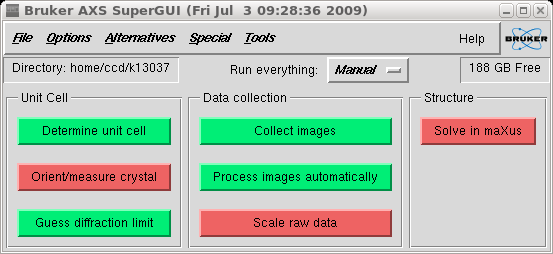
The SuperGUI window wants you to click the "Scale raw data" button, which brings up
the following window:
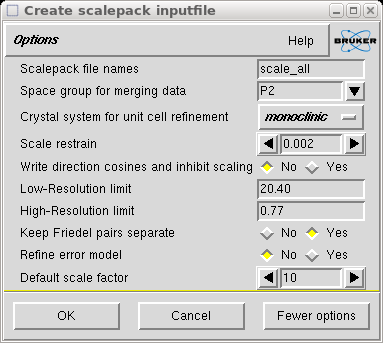
When you click "Ok" you get a scan list again. Guess what comes next ... click "Ok".
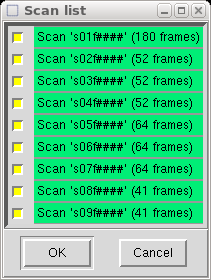
At this point Scalepack senses that one of your scans (the 'fast' one) had a
different exposure time than the rest, and warns you about it. This is ok because we
are only using Scalepack to ensure that nreport will work properly.
Click "Ok".

A little yellow window appears telling you that Scalepack is running ...
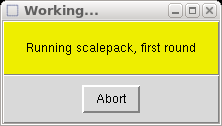
When it is finished, a box of statistics appears on the screen.
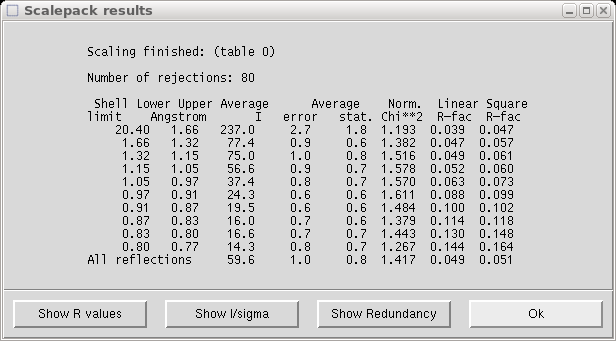
You can click "Ok", go back to a terminal window and run nreport. If you don't
remember what nreport does, take a look
here and
here then move on to part 3 of this
tutorial (below). For comparison purposes, you may also want to write out a
SHELX format version of the Scalepack scaled and merged dataset using
cifin from the
command line in the terminal window.
1) Extract the intensity data from the diffraction frames.
2) Run a first pass through with Scalepack.
3) Create '.sad' input files for SADABS.
4) Run SADABS separately for fast and slow scans.
5) Identify overload intensities and edit slow .hkl file.
6) Merge fast and slow scans in XPREP.
2) Run a first pass through with Scalepack.
3) Create '.sad' input files for SADABS.
4) Run SADABS separately for fast and slow scans.
5) Identify overload intensities and edit slow .hkl file.
6) Merge fast and slow scans in XPREP.